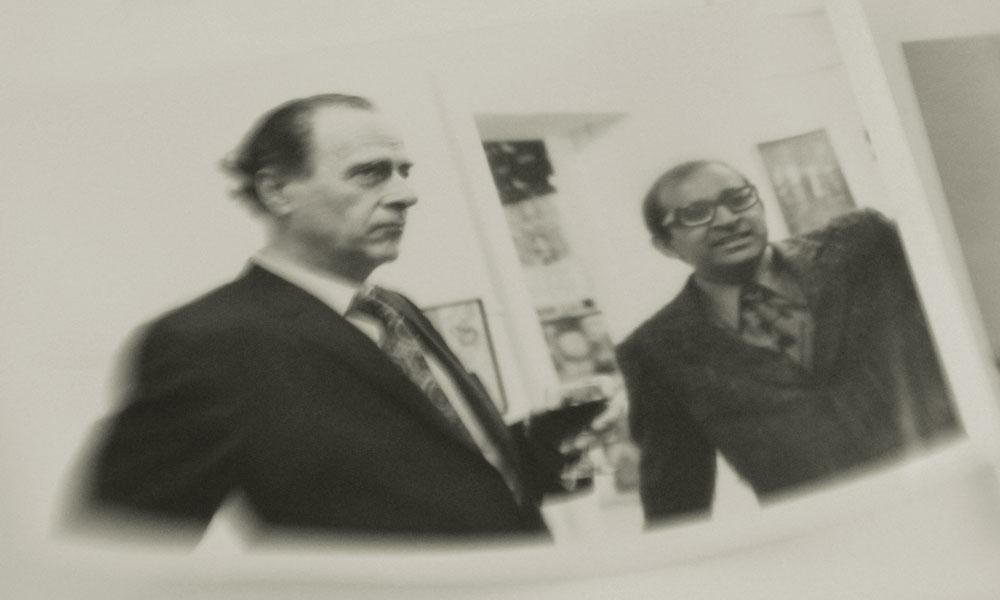The artist P. Mansaram immigrated to Canada from India in 1966. In Toronto, Mansaram exhibited at the Picture Loan Gallery and also organized happenings at the Isaacs Gallery. In the late 1960s and early 1970s, his art was both inspired by and, indeed, sometimes created in collaboration with Marshall McLuhan. The men became friends. Eventually, Mansaram’s art inspired the influential media theorist to do a bit of friendly art writing.
In June, Ed Video brought the two men and their collaboration together again in the exhibition “Intersection—Mansaram & McLuhan.” Featured in the show was Mansaram’s Rear View Mirror collage series (1966–72), and prominent among these works was a collaborative collage that combines elements of Eastern and Western cultures. The theme is their bond—something certainly central to Mansaram’s work and likely to McLuhan’s theories.
A surround-sound audio installation also broadcast an interview Mansaram conducted with McLuhan in 1967. In it, McLuhan is heard quipping about film, music, the hippie movement in Yorkville, the psychedelic experience and how electronic communication has changed the perception of time and space. And among texts and photos included in the show is a typed letter by McLuhan dated January 17, 1973. In it, he comes to terms with the values he shares with Mansaram. He writes:
“The work of Mansaram presents a natural dialogue between the cultures of the East and of the West. His Oriental frame of reference and sensibility…brings many forms and many media to participate in one another. Mansaram’s cosmopolitan perception enables him to entertain Western leit motifs easily and naturally. As the West loses its intense visual preference and enters the iconic world of sculptural and acoustic values, the painterly and graphic idiom of India gains steadily in Western habits of acceptance. The work of Mansaram brings the mosaic forms of T.S. Eliot and James Joyce to the Orient in the very moment and by the same means that Mansaram enables us to contemplate the Orient as a variant modality of The Waste Land. In short, Mansaram is a kind of two-way mirror, living simultaneously in the divided and distinguished worlds of the East and West.”
That’s some exceptional art writing from an influential voice who also happened to be a great friend.
This is an article from the Winter 2013 issue of Canadian Art. To read more from this issue, check out its table of contents.

 Marshall McLuhan and P. Mansaram at the opening for Mansaram’s “Rear View Mirror” exhibition at the Picture Loan Gallery in Toronto, 1974
Marshall McLuhan and P. Mansaram at the opening for Mansaram’s “Rear View Mirror” exhibition at the Picture Loan Gallery in Toronto, 1974







